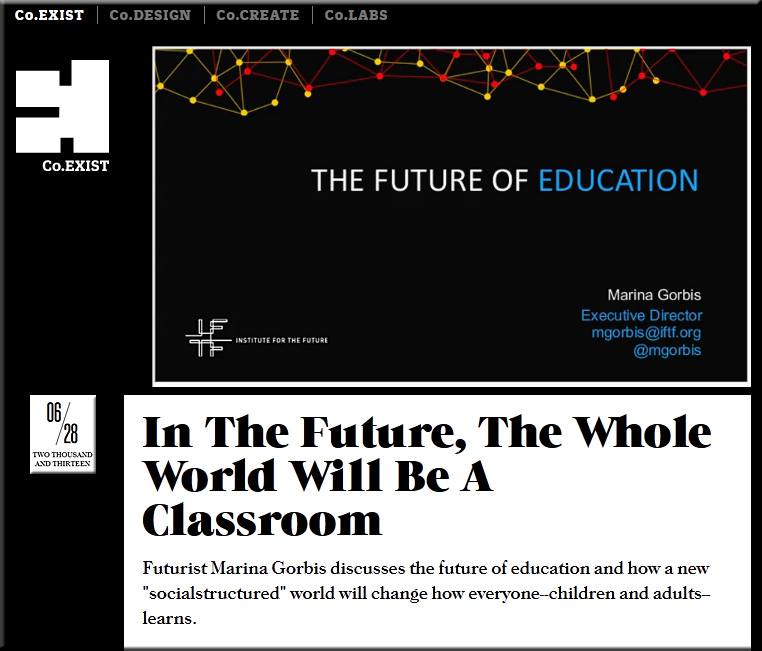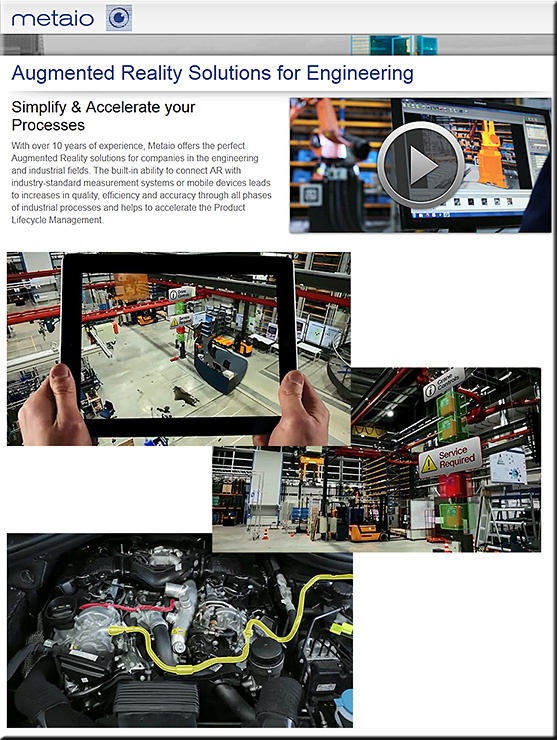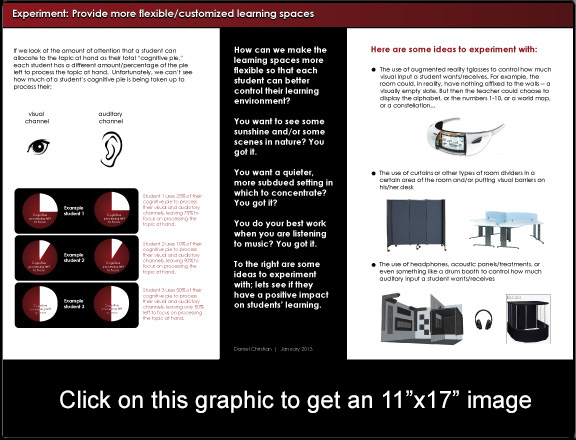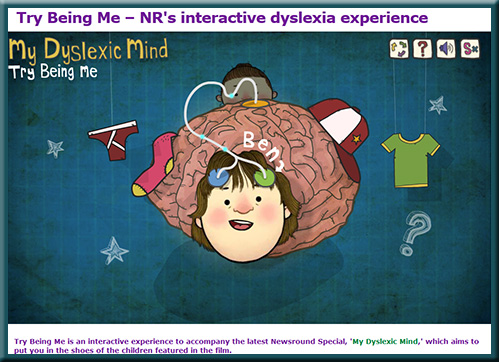In the future, the whole world will be a classroom — from fastcoexist.com by Marina Gorbis
From DSC:
What Marina is asserting is what I’m seeing as well. That is, we are between two massive but different means of obtaining an education/learning (throughout our lifetimes I might add). What she’s saying is also captured in the following graphic:
.

Also see:
- A long-overdue technological revolution is at last under way — from economist.com
. - Catching on at last — from economist.com
New technology is poised to disrupt America’s schools, and then the world’s
.
- School’s out for summer: Rethinking education for the 21st century — from allthingsd.com by Naveen Jain


















